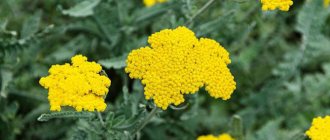Description of low-growing chrysanthemums
Low-growing varieties of the crop include more than 50 varieties with different colors, flowering periods and bush sizes. All dwarf representatives form a crown of a regular spherical shape. The bushes are compact and very dense, the budding is so abundant that the flowers completely cover the surface, starting from the base. The leaves of the plant are dark green, oblong in shape with wavy edges, but they are not visible behind the flowers.
All low-growing varieties form small buds, the diameter of which rarely exceeds 7-9 cm. According to their shape, flowers are divided into double, semi-double and simple.
The dwarf variety of culture in size is:
- short – 20-30 cm;
- medium size – 30-40 cm;
- high – 50-65 cm.
Flowering times vary: early varieties bloom in August, mid-late varieties in September, late varieties in early October. The duration of the biological cycle lasts 30-35 days.
Abundant flowering of the plant is observed only if the basic rules of agricultural technology are observed.
What are border chrysanthemums?
Border or as low bush chrysanthemums are also called - ground cover - these are plants 20-30 cm high (less often 20-50 cm) with inflorescences of various shapes, sizes and colors. Border mini chrysanthemums are characterized by the following features: compactness, early and abundant flowering, absence of root shoots.
Chrysanthemums whose height reaches 25-30 cm are called border chrysanthemums. Among them there are both small-flowered and large-flowered varieties.
Among their advantages are also:
- variety of colors and shapes;
- long flowering (sometimes more than 3 months);
- high winter hardiness;
- unpretentiousness to growing conditions.
Thanks to these advantages, small flower “queens” have gained great popularity in landscape design. They are used to decorate flowerbeds, edgings and flower beds, planted along garden paths, decorated with plants placed in pots and flowerpots, terraces, gazebos, recreation areas, and used in bouquets and floral arrangements.
In autumn there are few flowering plants, and chrysanthemums become the main decoration of garden plots. They look great in garden beds, flower beds, and borders; they thrive in container plantings and last up to 30 days when cut.
Varieties of low-growing chrysanthemums
Landscape designers recommend creating a mix of varieties of different flowering periods, then the flowerbed will retain its bright, decorative appearance for a long time: from the end of summer until the onset of frost. A review of varieties of low-growing chrysanthemums with different flowering times and colors will allow you to choose the optimal seedling for planting in any region.
Mascot
The talisman is a dwarf chrysanthemum with a spherical bush. Plant height is 30-35 cm. The flowers are small, bright burgundy, semi-double. Their diameter is 5-6 cm. The Talisman variety is used to create multi-tiered borders.
The flowering period begins at the end of August and lasts until the beginning of October.
Elfie White
The low-growing Elf White chrysanthemum is distinguished by small (up to 3.5 cm) flowers. The petals are white, the core is lemon-colored. The bush is compact, spherical, of medium height (45-50 cm). The flowers are simple.
Elf White is a mid-late representative of the culture whose buds bloom in mid-September
Bransky Plum
Bransky Plum is a tall chrysanthemum (up to 70 cm). The round bush is completely covered with large flowers of bright pink color.
Bransky Plum blooms in September
Branbeach Orange
Branbeach Orange is a low-growing, late-blooming chrysanthemum whose biological cycle begins in October. In the Middle and Central zones, the bush often goes under the snow at the peak of flowering. This is one of the frost-resistant varieties with bright orange double flowers of medium diameter (up to 5 cm).
Plant height -55-60 cm
Branbeach Sunny
Branbeach Sunny is a bright yellow, small-flowered, double variety. This is a popular variety with a long flowering period (August-October). The flowers are double, their diameter is about 8 cm.
The height of the Branbeach Sunny bush is 50 cm
Indian chrysanthemums
Today there are more than 10,000 varieties of Indian chrysanthemums.
Among them there are specimens with both large and small flowers. Among them there are also relatively winter-hardy chrysanthemums that can be grown even in the Moscow region. Mostly large double flowers are represented. Their parts are used by florists for flower arrangements. Below are some of the most common varieties of Indian chrysanthemums.
Gazelle
The variety blooms early with white buds up to 17 cm in diameter. The length of daylight directly affects the decorative effect. Just 10 hours is enough.
Aurora
One of the most famous varieties of Indian chrysanthemums. It grows up to a meter in height. Bright orange flowers of medium size, up to 10 cm in diameter. It blooms for two months (August - September).
Among Korean chrysanthemums there is also the Aurora variety.
Alec Bedser
Early variety. Blooms in September-October. Grows up to 70 cm. The plant requires careful care in open ground.
The flowers are large, up to 14 cm in diameter, yellow in color. Can be grown both for cutting and for flower beds.
Anastasia
The variety includes many subspecies, each of which has different color shades: white, pink, lilac
. There are also varieties of yellow shades (dark, light, lemon and others).
The size of the inflorescences of all flowers is the same with a diameter of up to 17 cm. The petals are thin. Flowering is long: from the beginning of September until the frosts at the end of November.
How to plant low-growing chrysanthemums
The technology for planting low-growing chrysanthemums depends on the method of cultivation. For use as a decorative element in a living space or open veranda, the crop is planted in a container. The time of work in this case does not matter. A flower pot is purchased 5-7 cm wider than the root system, the bottom is covered with drainage, ready-made soil is used or a mixture of peat, humus and sand is made. Canopy cultivation is suitable only for dwarf varieties of chrysanthemums; the crop is perennial; after 3 years, the container is replaced with a larger one.
Dwarf varieties are planted in the spring; multiflora varieties are adapted to temperate climates, but do not tolerate sudden changes. Seedlings are placed on the plot in the spring, when the temperature at night is above zero and the threat of frost has passed. In the Central zone they are targeting the end of May. In autumn (September) you can plant dwarf chrysanthemum only in the southern regions.
A mix of chrysanthemums is often used for vertical gardening.
Selection and preparation of a landing site
Chrysanthemum of low-growing varieties is a light-loving crop; only with a sufficient supply of ultraviolet light is full photosynthesis possible. In the shade, the stems stretch out, the plant looks weak, budding is rare, and the flowers are small. Therefore, for planting, choose a sunny area, protected from the north wind.
Chrysanthemums grow well on loamy, aerated, fertile soil with a slightly acidic or neutral reaction. Areas with stagnant water are not considered. Constantly wet soil is unacceptable for the crop. The site is prepared in advance, it is dug up, weed roots are removed, and wood ash is scattered on the surface. Before starting work, prepare a nutrient substrate from compost, peat and nitrophoska.
Landing rules
The day before planting, dig a hole 40 cm deep, cover the bottom with drainage and fill it with water.
Following actions:
- The seedling is taken out of the transport pot, the earthen lump is not touched. If the root is open, it is immersed in Energen, a growth stimulating agent, for several hours.
- The seedling is placed in the center and covered with nutritious soil mixture.
- Compact and water.
Advice! It is advisable to cover the root circle with mulch.
When planting linearly, maintain a distance of 30-35 cm between chrysanthemums
Watering and fertilizing
Low-growing multiflora chrysanthemums do not respond well to moisture deficiency; the soil must be moist during the growing season. The amount of watering is adjusted depending on the frequency of precipitation. Water stagnation is not allowed, because in frequent cases, root rot is observed. If watering is not adjusted, the bush will die.
Fertilizing is applied throughout the growing season:
- in spring - nitrogen-containing fertilizers and growth stimulating agents;
- at the time of budding - superphosphate and organic matter;
- during flowering - Agricola for flowering plants;
- in autumn – potassium preparations.
Important! Fresh manure cannot be used as fertilizer, since the plant will only grow green mass throughout the entire growing season.
Low-growing spherical chrysanthemums, planting features
Chrysanthemums can be planted both in a flower bed and in garden flowerpots, which will be appropriate in any corner of the garden, on the balcony or in the garden.
Time and place of planting low-growing spherical chrysanthemums
- Chrysanthemums, like most other representatives of the Astrov family, prefer sunny and well-lit areas, protected from drafts and gusty winds. Only in such conditions will the plant be able to develop as favorably as possible, forming beautiful spherical clumps, abundantly strewn with bright flowers. In the shade or even partial shade, the perennial will “feel” depressed, which will negatively affect its appearance (the shoots will begin to stretch, the plant will begin to bloom less and later).
- Areas with close groundwater, frequently flooded areas, and wetlands are not suitable for planting this flower crop. In conditions of constantly high humidity, the roots of the plant can rot, so it is important to provide the seedlings with elevated places with a mandatory drainage layer. The best soil for planting “Sunny Flowers” is light, loose and nutritious.
- Globular chrysanthemums need enough space so that the beautiful blooming “balls” of the perennial do not oppress each other or neighboring plants. It is possible to plant the crop in a flower pot or garden pot, then you should make sure that the chrysanthemum does not stand close to the wall, which can cause the spherical bush to “flatten” and become deformed.
- Chrysanthemums are planted in the spring, when the air and soil have warmed up sufficiently and the threat of return frosts has completely passed. If spring frosts are predicted, temporary shelter for the bushes will be needed. This could be an improvised greenhouse made of agrofibre or large plastic bottles with small “ventilation” holes. The best time for planting is a cloudy day, since the sun's rays can leave burns on the young leaves of the seedling.
Agricultural technology for planting low-growing spherical chrysanthemums
- In the case of planting chrysanthemum rhizomes that were stored in winter, they need to be helped to “wake up” so that they begin to grow faster. To do this, the roots (several days before planting) are placed in a shallow container with a damp substrate and left in a well-lit place, for example, on a windowsill. As soon as the first sprout sprouts and young roots appear, the plant is ready for planting in open ground.
- To plant low-growing chrysanthemums, you can use a purchased soil mixture or prepare the substrate yourself. A mixture of garden soil with the addition of vermicompost (20:1) is ideal for this.
- When planting seedlings in open ground, you must first dig up the area and remove all existing weeds. In case of poor soil composition, it is recommended to apply additional fertilizers. This can be any non-aggressive organic matter (humus, compost) or mineral complexes containing nitrogen and phosphorus. When applying mineral fertilizers, the dosage is reduced by 1.5-2 times compared to what is indicated on the package.
- For planting chrysanthemums, prepare a shallow hole, taking into account the shallow location of the plant’s root system. A depth of 40-45 cm is sufficient. If a decorative pot is used for planting a flower crop, a 5-6-liter container with obligatory holes (drainage) is sufficient.
- A drainage layer of pebbles, expanded clay or fine gravel is placed at the bottom of the planting hole (or flowerpot). Coarse river sand or dried crushed eggshells are also suitable as drainage.
- After this, a little soil substrate is poured onto the drainage layer, which is well shed with water. In this form, the planting hole is ready for planting the seedling.
- During planting, the roots of the chrysanthemum are carefully straightened so that they do not bend and are placed freely in the planting hole. If one rhizome is planted, it should be completely covered with soil.
- After planting the seedlings, the main shoot is pinched and the growing point is removed. This technique allows the crop to quickly form the desired ball shape. Many gardeners prefer another pinching, 20 days after the first, but this procedure is not mandatory.
If you plan to plant several chrysanthemum bushes in a flowerbed at once, maintain an interval between plants of at least 30-50 cm.
How to properly form low-growing chrysanthemums
Dwarf bush chrysanthemums form a spherical, regular bush shape. You can grow them in their original form or make minor adjustments. Some tips for forming multiflora chrysanthemums:
- during planting, all side shoots are removed from the seedling and the crown is broken off;
- after 2 weeks, the bush is thinned out, cutting off weak shoots in the lower part and re-breaking off a couple of nodes on the peduncles left to create a crown;
- Ideally, the plant should look like a ball, completely covered with flowers; if the leaves or stems extend beyond the boundaries of the given shape, they are removed.
In varieties of low-growing chrysanthemums, the correct shape of the bush is determined at the genetic level, so there is no need for significant correction.
Low-growing spherical chrysanthemums, care rules
Planting and caring for a low-growing spherical chrysanthemum is absolutely not difficult and is accessible to anyone, even a novice gardener.
- This variety of chrysanthemums has a beautiful compact ball shape and does not require special pruning. This feature of the plant is inherent at the genetic level, which greatly simplifies the process of growing a flower. Some gardeners recommend pinching the top of the shoot once, when the first 2-3 pairs of leaves form on it. According to experienced gardeners, this technique will be an additional incentive for the growth of the crown of the globular chrysanthemum.
- In addition to pinching, the unpretentious low-growing crop requires the usual agrotechnical measures: loosening, watering, fertilizing and preparing for winter.
Let us consider in detail all the rules for caring for an ornamental plant.
Watering and loosening the low-growing globular chrysanthemum
- This flower crop should be watered as needed. The moisture-loving plant tolerates both waterlogging and drought equally poorly.
- Stagnant water often causes the development of fungal diseases, so for chrysanthemums it is necessary to provide regular moderate watering as the soil dries out.
- Moistening the soil is especially important during hot, dry periods, since the lack of moisture immediately affects the decorative properties of the shrub.
- To prevent the plant's roots from being damaged by temperature changes, watering is carried out in the morning or evening, when the soil has not yet warmed up under the influence of the sun.
- Water the chrysanthemum bushes carefully, at the root, so that as little water as possible gets on the leaves and flowers of the plant.
- Rain or settled water is best suited for irrigation.
Fertilizing and feeding chrysanthemum low-growing spherical
- You can feed the perennial several times during the entire growing season.
- The first feeding is carried out 2-2.5 weeks after planting, when the chrysanthemum has firmly taken root and “started to grow.” During this period, nitrogen-containing complexes are used to stimulate the development of green mass of the bush.
- For the next feeding, which is carried out 2-3 weeks after the first application of fertilizers, you can use complexes containing nitrogen and phosphorus, but with a predominance of the latter element.
- It is better to select subsequent fertilizers that contain elements such as potassium and magnesium, which ensure lush flowering of the crop. This feeding is carried out before the formation of buds.
- Any organic “additives” will also be useful for chrysanthemums: an infusion of wood ash, manure or humus.
- It’s not worth it to get carried away with fertilizing, since the plant is quite enough with 2-3 fertilizing procedures over the entire growing season. And in the case of rich fertile soil, a one-time application of fertilizers in early spring will be sufficient.
Control of pests and diseases of low-growing spherical chrysanthemums
- During periods of unfavorable climatic conditions, accompanied by prolonged rains and high humidity, the plant may be affected by fungal diseases. Most often, flowers “get sick” with powdery mildew, the first signs of which are blackened foliage and shoots bare at the base. A preventive measure at this stage will be spraying the bushes with copper-containing preparations. If it was not possible to avoid the disease, the damaged parts are removed, and the bushes are treated (4-5 times with an interval of 7 days) with a solution of copper sulfate and laundry soap (10 g of vitriol and 100 g of soap per 10 liters of water).
- Periodically watering the chrysanthemum bush with water containing the drug “Fitosporin” will help prevent the appearance of root rot.
- Among the pests, low-growing “beauties” can suffer from an invasion of aphids, caterpillars and spider mites. Any insecticide will be useful in the fight against parasites.
Preparing low-growing globular chrysanthemums for winter
The low-growing spherical chrysanthemum is considered a fairly frost-resistant variety, but there are some nuances to wintering the perennial.
- If spherical chrysanthemums grow in southern regions with a temperate climate and not very cold winters, they can easily survive wintering in the ground, provided they are additionally insulated in the fall. Spruce branches, leaves, sawdust or straw are used as cover, which are used to cover trimmed perennial bushes.
- In most parts of the country, it is safer to dig up the bush (several weeks before frost) to keep the plant in a cool, dark place until spring.
- Preparing chrysanthemums for the upcoming winter involves pruning above-ground shoots to 10-15 cm. The procedure is carried out in October-November, when flowering ends. Pruning allows you to stimulate the development of root shoots, and will also protect the crop from possible diseases and pests that parasitize in fallen leaves.
- The dug up bush is placed in a box with earth, sand or moistened sawdust. You can store chrysanthemums in a cellar, with an air temperature from -30C to +50C. The earth ball should remain slightly moist.
Considering that the spherical chrysanthemum is a perennial plant, it is not recommended to plant it in one place for more than 2 years in a row. Otherwise, the variety gradually begins to degenerate, stretch out and lose its original decorative appeal.
How do low-growing chrysanthemums propagate?
The possibility of generative reproduction depends on the shape of the flower. The seeds are formed in tubular petals in the center. There are no sterile varieties in the varieties of low-growing chrysanthemums. The material is collected at the end of autumn, sown on the plot in the spring or seedlings are grown, in this case the seeds are sown in February.
Low-growing border chrysanthemums grow quickly. The crop can be propagated by dividing the bush if the mother plant has reached three years of age.
Low-growing chrysanthemums are bred using the vegetative method
To do this, cuttings are cut in the spring and placed in fertile soil for rooting. For the winter they are brought indoors, and in the spring they are identified on the site.
Caring for chrysanthemums at home
Like all flowers, bush chrysanthemum has its own care characteristics:
- Lighting – it is best to place the pots on western or eastern windows: from an excess of light, the chrysanthemum will quickly fade, and if there is insufficient lighting, the buds will not open. The plant has no more than 10 hours of daylight, so after this time the pot must be covered with a cardboard cap.
- Temperature – in order for the bush to accumulate enough buds and bloom for a long time, you need to maintain the temperature in summer 20-23°, in autumn – 15-18°, in winter – 3-8°;
- Watering is carried out with warm, settled water strictly at the root.
- Spraying should be carried out regularly when growing chrysanthemums indoors. If the pot is on the balcony, it is not sprayed, since there is already the necessary air humidity.
How do low-growing chrysanthemums overwinter?
If a chrysanthemum grows in a flower pot, it is taken out to the balcony or terrace for the summer, but it overwinters in stationary conditions. You can transplant the plant from open ground into a container, bring it into a greenhouse, or leave it on a closed veranda if the room temperature does not drop below -7 0C.
Low-growing varieties of chrysanthemums are frost-resistant enough to remain in the flowerbed during the cold season and not create unnecessary problems with replanting.
After choosing a wintering method, the following activities are carried out:
- When the chrysanthemum has faded, shorten the flower stalks by 10-15 cm;
- Remove weak shoots in the center that thicken the bush;
- A preventive examination is carried out; if there are signs of disease, the affected part is removed and the plant is treated with an antifungal agent.
- Approximately at the end of October they are fed with phosphorus and potassium.
- Cover the root circle with mulch, install arcs, and cover them with covering material.
Approximately 15 cm should be left from the tops of the stems to the installed arches.
Application in landscape
These unique spherical flowers are used in different floral arrangements:
- planted individually and in groups, using varieties of the same or different colors;
- combine in combination with medium-growing and tall varieties;
- planted together with decorative foliage flowers and evergreen conifers.
Low-growing chrysanthemums look beautiful along alleys, borders, in flower beds and mixed borders. They are often used to divide a garden area into bright, colorful zones.
Diseases and pests of low-growing chrysanthemums
Low-growing varieties are attractive to gardeners because they have strong immunity. Subject to proper growing conditions, plants rarely get sick. Problems arise only in overly moist soil. In this case, reduce watering or transplant the bush to a more suitable place.
Among the pests, slugs pose a threat to low-growing seedlings. They are removed manually or using Metaldehyde.
The insecticide is placed near all chrysanthemums within a radius of 5 m
If there are anthills on the site, aphids may appear on the bushes; they get rid of them using Spark.
It is necessary to treat the soil and above-ground mass in the spring and at the first signs of pest appearance
Chrysanthemum propagation or what to do after wintering?
Any wintering ends with the arrival of stable spring warmth. Then the multiflora chrysanthemum wakes up, begins to grow young shoots, and basal shoots appear.
Young shoots on the mother plant of spherical chrysanthemum
What to do with an overwintered plant? You can grow it further, because any chrysanthemum is a perennial. However, there is a risk that after 2-3 years of growth the ideal ball will no longer be obtained and the bush will fall apart. If you grow multifloras for yourself, this is not so scary. If it is for sale and the correct habit is important, then the old bush is used only as a queen cell. This means that it is either cut or divided, using root shoots for further growing. These methods of propagating multiflora chrysanthemums are the most popular. Propagation by seeds is also possible, but it is used extremely rarely.
Dividing the bush
In this case, the mother bush is divided into several plants, separating the basal shoots. This is usually done in March-April, when the shoots reach 8-10 cm. They are small plants that have their own roots. They need to be very carefully separated from the mother bush, and you can use a sharp knife.
You can divide a multiflora bush using a sharp knife.
Then the divisions are immediately planted either in open ground (weather permitting) or in a pot.
One mother bush can be divided into several young plants
The method of dividing the uterine bush of a spherical chrysanthemum is shown in the video:
Cuttings
Everything is simple here. When the stems grow on the mother liquor, cuttings 4-6 cm long are cut from them with a sharp knife or pruning shears. Both apical and middle cuttings are suitable - it doesn’t matter. In any case, they will be able to grow into a full-fledged plant and form a ball.
The lower leaves are torn off, otherwise they will be immersed in the ground or water and will rot. Then the cutting is dipped in Kornevin (heteroauxin) and the lower internode is buried in soil poured into a plastic cup, cassette cell or other container.
You can also dip the cuttings in Kornevin and place them in water. The spherical chrysanthemum takes root well in water. However, if you started cuttings in the fall or winter, that is, in cold weather, it is better to prefer rooting in the ground.
Depending on the temperature and time of year, the roots of multiflora cuttings appear on the 10-14th day.
Chrysanthemum cuttings gave roots in a peat tablet
The cuttings of multiflora chrysanthemums are described in detail in the video:
Photo of dwarf chrysanthemums
Low-growing chrysanthemums come in a variety of colors and flower shapes. Several photos of varieties popular in ornamental gardening will help you choose a flower suitable for a particular region.
Multiflora Ursula Red
Bush variety with a spherical crown Branfountain Purple
Coral member of the Branfontain Salmon group
Low-growing variety Brandove White
Multiflora of Brangala
Border variety Sund Cream
Ampel variety Maragon
Low-growing bush variety Green
Dwarf chrysanthemums planting and care – Cottage, garden, vegetable garden, indoor plants
- 1 Globular chrysanthemums: care description reproduction photo video cultivation
- 2 Chrysanthemums - planting and care in open ground, forming a beautiful bush
- 3 About small (small, dwarf) perennial chrysanthemums: planting and care
- 4 Garden perennial spherical chrysanthemum: planting and care, varieties + photos
- 5 Globular chrysanthemums: planting, wintering, propagation, cultivation and care
In the gardens of the middle zone, one of the most common flowers is the chrysanthemum. It is valued for its unpretentiousness, the absence of the need to sow it again every spring, and its long flowering period.
Especially popular are young spherical chrysanthemums, caring for which is no more difficult than other varieties. They are almost never cut, but are grown mainly for balconies and loggias. How to provide comfortable conditions for such a flower?
Why are these flowers so popular among gardeners?
But these flowers won the hearts of gardeners not only with their fabulous appearance: Unlike other varieties, they often bloom even at the end of August, delighting flower growers all autumn. Thanks to their unique genetic properties and constant selection, they do not require any pruning or shaping at all: the bush acquires a spherical shape completely independently.
But some experts say that it is more useful to pinch the tops when about four pairs of leaves appear on them.
However, in 90% of cases this event is not necessary, since the spherical chrysanthemum will acquire the necessary shape without your intervention.
In addition to the vegetable garden and garden, the bushes of this amazing plant feel great even on the windowsill, being planted in flower pots.
In a word, they can become a real decoration of the area everywhere, attracting admiring glances.
The only obstacle for beginners may be their wintering, which requires certain conditions and care.
Features of growing spherical chrysanthemums
Planting and propagation of this plant is carried out by dormant rhizomes or seedlings that have already begun to function, since the seeds have no varietal characteristics, and no one can say with certainty what kind of flower you will get.
In addition, purchasing rhizomes/seedlings increases the chances that the chrysanthemum will actually grow and bloom while the probability of seed germination is not 100% at all. Therefore, novice gardeners are especially advised not to try to achieve results from seeds. However, there are also a few points here:
- Buy both seedlings and rhizomes in the spring, exactly at the time of planting, since this is the only way to monitor the quality of the material.
- Pay attention to the appearance of the rhizomes: they should be free of stains, signs of rotting, and dry areas.
The optimal time for planting spherical chrysanthemum, according to experts, is early spring, when the first grass begins to emerge. The soil should already have melted enough to be dug up.
If you are working with rhizomes, you must first awaken them by placing them in a large container and sprinkling them with settled water. They must be located in a bright place, but not under direct rays.
A few days later, when the sprouts appear, they are planted.
Unlike most varieties of chrysanthemums, spherical ones can be planted not only in open ground, but also in small pots.
However, before this you need to properly prepare the soil by mixing ordinary garden soil with peat and a small amount (25% of the total volume of the substrate) sand, which will act as natural drainage.
In this case, at the bottom of the hole or pot, you first need to lay out a separate layer of drainage (about 3 cm), for which you can use crushed eggshells, and only then add soil.
- If you intend to plant spherical chrysanthemums in the garden, choose a cloudy day. Even better if it's rainy. Hot, dry weather will be bad for the health of the rooting plant. If you need to land urgently, do it in the morning or late evening so that the sun is not at its peak.
The depth of the hole for a spherical chrysanthemum seedling should be 40 cm, and if you take a pot, its volume should be within 5-6 liters. The soil is lightly trampled during the teaching process, and in the garden the soil is first dug well and deprived of weeds, otherwise they will choke the young flower. Afterwards, the substrate needs to be moistened and allowed to soak before planting.
- Fertilizers are not added to the pot/hole when planting chrysanthemums.
- It is impossible to deepen the rhizomes of the globular chrysanthemum too much.
For the first few days, the flower needs to be in a bright place, but not under the scorching sun.
If the weather is dry, of course, shade the seedlings (in the case where it is not possible to pick them up) using nectar material, otherwise burns will appear on the young leaves.
During the first 1.5-2 weeks, their condition should be closely monitored, mainly checking the soil moisture and growth rate. After this, the chrysanthemum will grow quietly on its own.
Caring for spherical chrysanthemums in the garden and loggia
The genetic characteristics of this young variety have led to the fact that gardeners now have almost no need to take care of the already unpretentious flower. The pruning required by ordinary chrysanthemums is not necessary for spherical chrysanthemums, since they are low-growing shrubs (exceed half a meter in height) and do not grow in width.
However, it is worth removing dry shoots and fading buds regularly. What else does this plant need?
- After planting, you need to pinch it to prevent the bush from growing: the so-called “growth point” is removed, and after 3 weeks the upper section, several nodes long, is removed. It is this step that will help the plant find its inherent ball shape.
- The place where the spherical low-growing chrysanthemum will grow should be well lit. If this is a loggia, then ideally it is southern. Find an area in the garden that is not adjacent to a wall. If the bush is constantly shaded, it will grow and flowering will be weak, its lifespan will be significantly reduced.
- Watering for plants that live in pots should be daily, and it is advisable to use rainwater or settled water. For those who grow in the garden, in a normal climate, natural moisture is sufficient. On dry, hot days, you can apply 2-2.5 liters under the bush, but keep in mind that this should always be done in the morning, before the soil warms up. And don't get caught on the leaves, otherwise you will get burned.
- They begin to feed spherical chrysanthemums from the 3rd week of life, always using nitrogen fertilizer, which also contains phosphorus. After 2 such feedings, experts advise switching to potassium mixtures, and also be sure to give magnesium to chrysanthemums - this will contribute to the lush flowering of the bushes.
It must be said that gardeners are still arguing about the real need for potassium-magnesium fertilizing: some of them believe that a one-time application of nitrogen fertilizer in the spring is enough for spherical chrysanthemums, and subsequent fertilizing will only do harm; flowering will be beautiful without them. There is no single recipe here: be guided by the chemical composition of the soil and the condition of your plant. You can also add a little ash, especially for a bush that lives in a pot and cannot receive nutrition from nearby areas.
However, most experts are convinced that it is better to give garden flowers too little fertilizer than to provide them with an excess of nutrients.











